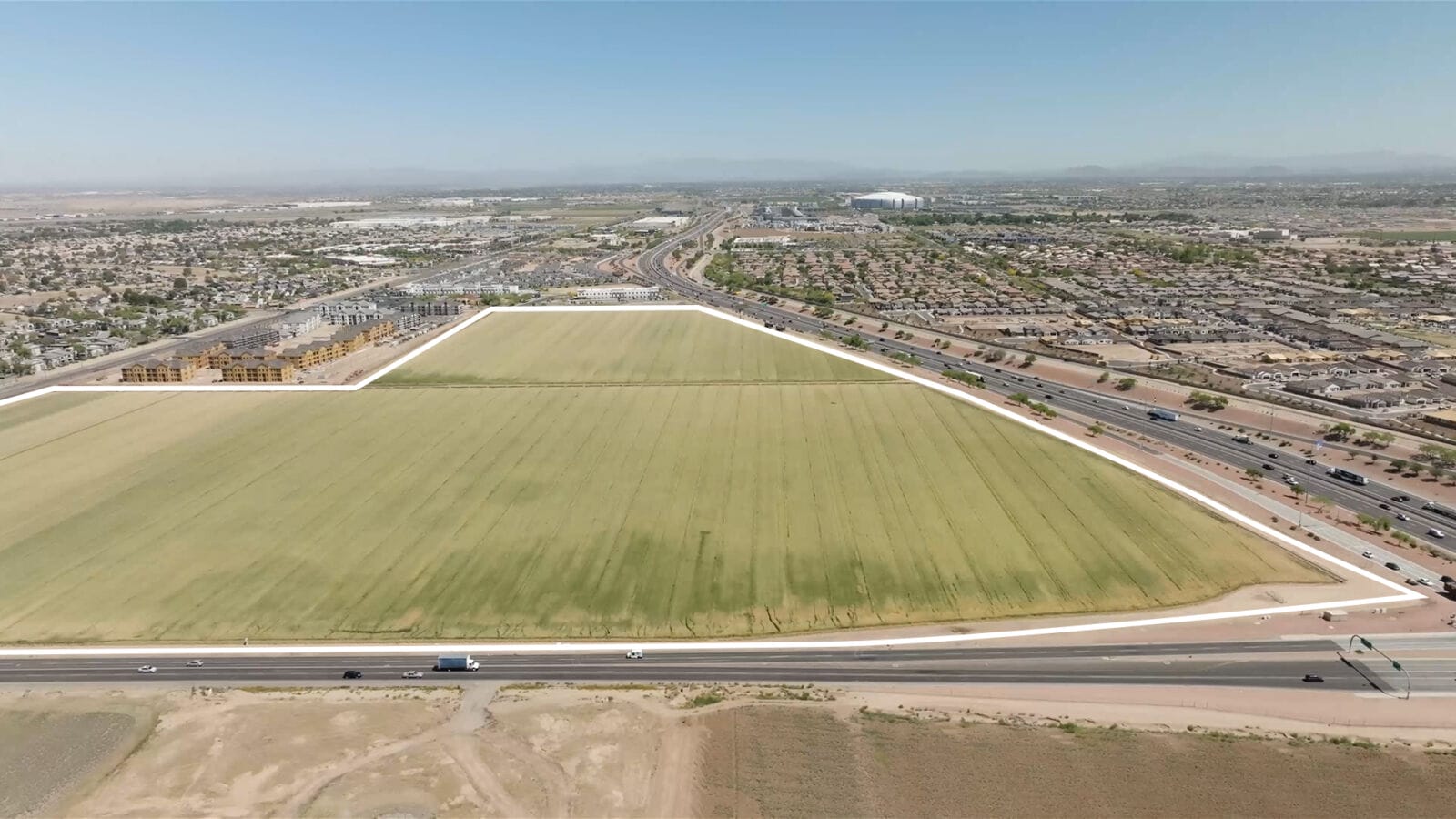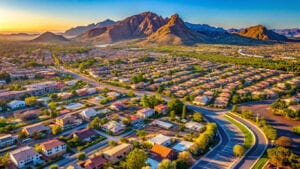Industrial development remains strong in the Valley, with CBRE reporting that 45 buildings totaling 9.1 million square feet were delivered in Q2 2024, with nearly 25% of that space being preleased. In the Maryvale Village of Phoenix, a new $250 million industrial and mixed-use project called Park Algodon broke ground in May with the first phase expected to be completed in Q3 2025, adding to the region’s growing industrial portfolio.
MORE NEWS: Metro Phoenix apartment boom continues in 2024. Will it last?
“Park Algodon will transform a 90-acre agricultural site to five industrial employment buildings totaling 1.3 million square feet, in addition to 25,000 square feet of retail space on seven acres,” says Grant Kingdon, principal of Creation’s Mountain West Region. “Phase one of the project will consist of four light industrial employment buildings, ranging in size from 120,00 square feet up to 320,000 square feet, with the ability to size down to 20,000 square feet, which can cater to a variety of different size tenants. Phase two will be a single 556,000-square-foot cross-dock facility that can size down to accommodate two tenants.”
The retail portion of the project, called The Shops at Park Algodon, will feature an assortment of restaurants and retailers. According to a press release, Avison Young is handling leasing, which has already garnered interest from concepts trying to support residential growth in the area.
“We want to have amenities for employers and their employees that will be working here,” explains David Sellers, founding partner of Creation. “It’s in our DNA to develop projects that have a real mixed-use, whether you look at the work we’ve down in Downtown Gilbert, North Scottsdale or other employment projects, we love to have retail. It makes it a better development.”
The speculative industrial development is located on the northwest corner of the Loop 101 and Indian School Road, presenting “a special opportunity to deliver an infill, freeway-visible, and highly accessible employment campus in a corridor starved for new inventory,” Kingdon adds.

According to Sellers, the parcel was owned by John F. Long, the founder and primary developer of Maryvale, for decades.
“[The land] was zoned residential, and [John F. Long Properties] wanted to do some zoning changes on around 1,500 acres total, and this was one of the pieces,” Sellers continues. “When we heard about that, we told them we thought it was a fantastic property. So many people drive by it every day. It’s got freeway access, visibility, a nearby labor pool and proximity to town. We’re in the west part of Phoenix, but it feels like an infill site.”
City of Phoenix District 5 Councilwoman Betty Guardardo notes that Maryvale is one of the largest villages in the municipality, and one of the youngest.
“When you walk around and talk to students and the community here, this site is going to help our youth who are still in high school,” she says. “This is place is going to help people get the employment they need. Phoenix has a pioneering spirit and welcoming attitude towards people in business. When companies expand or relocate to Phoenix, they join a community rich with opportunity, innovation and economic vibrancy.”
Not only will Park Algodon attract new employers, but it will also address the critical shortage of small-bay industrial space that Guardardo says has long hindered the expansion of the business community.
“The benefits of this development extend beyond just the industrial sector,” she continues. “The much-needed retail and restaurant inventory that will eventually be a part of Park Algodon is something our community has been eagerly awaiting. This project will undoubtedly serve as a transformative force, driving economic growth and improving the overall livability of our community.”
Speculative development
Since the pandemic, the industrial sector has surged in Greater Phoenix as companies such as TSMC and Intel have made multi-billion-dollar investments in the region. Logistics companies also see Arizona as a logical place to locate, thanks to the state’s proximity to California and Mexico.
“The Phoenix industrial market continues to be a national leader in demand and new construction deliveries. While the deliveries are leading to an increase in vacancy rates, a slowdown in new starts should create stability and higher occupancy moving forward,” says Kevin Helland, senior vice president at Avison Young, in a press release. “Remarkably, during this time, vacancy is at historic lows in properties under 20,000 square feet, reflecting the high demand for smaller occupiers. Overall, the market is healthy, and the fundamentals set the stage for more growth and success in the years ahead.”
When looking at the market, Seller notes that there is a lot of construction happening, but taking a more granular look reveals underserved areas.
“You have to look at the different pockets of Phoenix,” he says, “and when you look at the [Maryvale area], there’s not really much spec construction — everything that’s been built has been absorbed.”
The demand for industrial space has made building speculatively a safer bet for developers. Indeed, Nathan Wright, deputy director of the City of Phoenix’s Community and Economic Development Department, says that speculative development is an asset for business attraction.
“About 90% of the companies we talk to want to go into existing buildings,” he concludes. “That’s why having these projects is important to us.”




